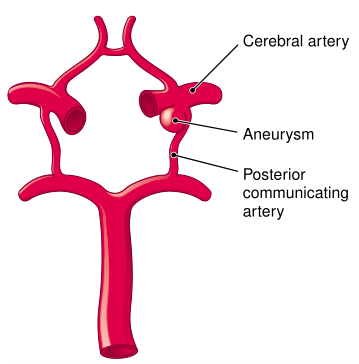The term cerebro vascular accident (CVA), or stroke, applies to any occurrence that deprives brain tissue of oxygen. These events include blockage in a vessel that supplies the brain, a ruptured blood vessel, or some other damage that leads to hemorrhage within the brain. Stroke is the third leading cause of death in developed countries, after cancer and heart attack (myocardial infarction), and is a leading cause of neurologic disability. Risk factors for a stroke include hypertension, atherosclerosis (hardening of the arteries), heart disease, diabetes mellitus, and cigarette smoking. Heredity is also a factor.
Thrombosis is the formation of a blood clot in a vessel. Often, in cases of CVA, thrombosis occurs in the carotid artery, the large vessel in the neck that supplies the brain. Sudden blockage by an obstruction traveling from another part of the body is described as an embolism. In cases of stroke, the embolus usually originates in the heart. These obstructions can be diagnosed by cerebral angiography with radiopaque dye, computed tomography (CT) scans, and other radiographic techniques. In cases of thrombosis, it is sometimes possible to remove the section of a vessel that is blocked and insert a graft. If the carotid artery leading to the brain is involved, a carotid endarterectomy may be performed to open the vessel. Drugs for dissolving ("busting") such clots are now available.
An aneurysm (Fig. 1) is a localized dilation of a vessel that may rupture and cause hemorrhage. An aneurysm may be congenital or may arise from other causes, especially atherosclerosis, which weakens the vessel wall. Hypertension then contributes to its rupture. The effects of cerebral hemorrhage vary from massive loss of function to mild impairment of sensory or motor activity, depending on the degree of damage. Aphasia, loss or impairment of speech communication, is a common after effect. Hemiplegia (paralysis of one side of the body) on the side opposite the damage is also seen. It has been found in cases of hemorrhage, as in other forms of brain injury, that immediate retraining therapy may help to restore lost function.

FIGURE 1. A cerebral aneurysm in the circle of Willis. (Reprinted with permission from Porth CM. Pathophysiology. 6th Ed. Philadelphia: Lippincott Williams & Wilkins, 2002:443.)
责任编辑:admin
上一篇:Explaining the Tissnes and Structure of the Human Body
下一篇:YIN AND YANG---THE LAW OF NATURE

微信公众号搜索“译员”关注我们,每天为您推送翻译理论和技巧,外语学习及翻译招聘信息。